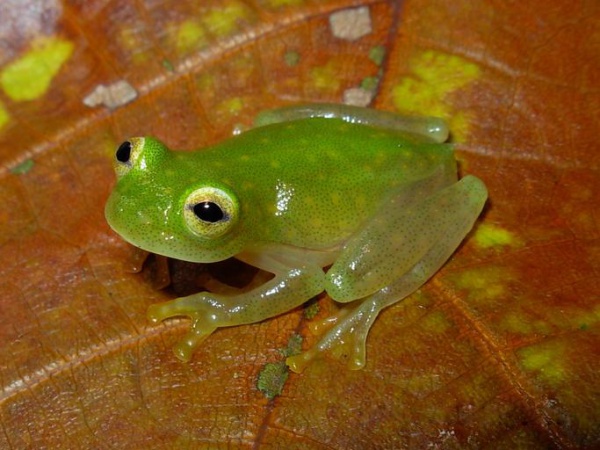Facts About Fleischmann's glass frog
Fleischmann’s Glass Frog: A Transparent Marvel of the Tropics
Introducing the Fleischmann’s glass frog, also known as the northern glass frog, a captivating species scientifically referred to as Hyalinobatrachium fleischmanni. These enchanting amphibians belong to the Centrolenidae family and are native to the tropical regions of the Americas, extending from southern Mexico to Ecuador. You can spot them in countries such as Mexico, Belize, Costa Rica, El Salvador, Guatemala, Honduras, Nicaragua, Panama, Colombia, and Ecuador.
A Tribute to Carl Fleischmann
The epithet "fleischmanni" commemorates Carl Fleischmann, a collector in Costa Rica during the 1890s. These frogs bear a resemblance to tree frogs but with a distinctive characteristic—their transparent skin, which aids them in blending seamlessly with foliage during the day. Males typically range between 19–28 mm in length, while females tend to be slightly larger, measuring from 23–32 mm. Their bodies exhibit a semi-translucent green hue, complemented by yellow hands and spots that mimic leaf patterns, making them masters of camouflage.
Habitat Preferences
Fleischmann’s glass frogs flourish in proximity to fast-moving streams, inhabiting lowland wet forests, rainforests, and elevated areas. They are arboreal, living among the trees, and lay their eggs on branches and leaves near water sources. Male frogs assume a vital role by guarding the eggs until they hatch; once hatched, the tadpoles descend into the water below. This reproductive cycle generally occurs during the rainy season, from May to October.
Breeding and Defense
The breeding process is fraught with challenges, as the eggs are vulnerable to predators and environmental hazards. Male frogs staunchly defend the eggs and keep them moist to ensure their survival. After approximately 10–15 days, the eggs hatch, and the tadpoles embark on a slow growth process that can take 1–2 years to reach full maturity. The eggs face threats from fungal infections and predators such as crickets and opossums.
Unique Adaptations
Fleischmann’s glass frogs exhibit unique behaviors and adaptations that enable them to thrive in their diverse habitats throughout Central and South America. From their transparent skin that affords superior camouflage to their dedicated parental care, these frogs exemplify nature’s ingenuity in the most remarkable ways.

 Costa Rica
Costa Rica